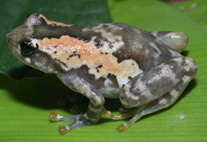Abstract
Whittingtonocotyle n. gen. is proposed for species with a male copulatory organ sclerotized, spiral, clockwise, non-articulated to the accessory piece; prostatic reservoir separated into two/three zones with one or two terminal areas densely stained; vaginal opening dextrodorsal; anchors without well-defined roots; and dorsal bar with anteromedial protuberance. Two new species of Whittingtonocotyle n. gen. are described from the gills of Hoplerythrinus unitaeniatus (Agassiz), from two rivers of the State of Pará, Brazil. Whittingtonocotyle caetei n. sp. (type species) is characterized by possessing ventral anchor with deep root truncate; prostatic reservoir separated into two zones with one terminal area densely stained; and vaginal canal heavily sclerotized, coiled and dilate distally. Whittingtonocotyle jeju n. sp. is distinguished from the previously species mainly by having a male copulatory organ comprising a coil of about 19 rings (29 rings in Whittingtonocotyle caetei n. sp.); a prostatic reservoir separated into three zones with two terminal areas densely stained; vaginal canal sclerotized, sigmoid; and dorsal bar with short anteromedial process (elongate in Whittingtonocotyle caetei n. sp.).

